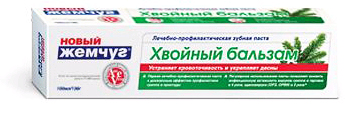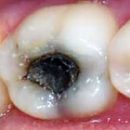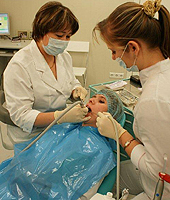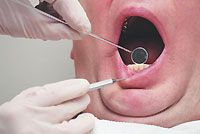Hygiene of the oral mucosa and prevention of periodontal diseases has recently become one of the most important directions in dentistry. The results of numerous studies of Russian and foreign specialists in the field of dentistry and periodontology indicate that a particularly common pathology of periodontal is in young age - gingivitis (according to some reports, it is found almost 80% of children), and after 30 years - periodontitis.
Content
Hygiene of the oral mucosa and prevention of periodontal diseases has recently become one of the most important directions in dentistry. The reason for this was the fact that periodontal diseases are very common and complex pathologies of the maxillofacial region. The results of numerous studies of Russian and foreign specialists in the field of dentistry and periodontology indicate that there is a particularly common periodontal pathology in young age — Gingivitis (according to some reports, it is found almost 80% of children), and after 30 years — Perdontitis.
Almost all types of periodontal diseases are inflammatory. The causes of their development can be like local factors: the state and products of the exchange in the dental plaque and dental, the factors of the oral cavity, affecting the pathogenetic potential of microorganisms and the products of their exchange, occlusal injury, filling, prosthetics, orthodontic treatment defects — This is how the influence of local factors together with the factors of common (endogenous) against the background of the transformed reactivity of the body.
Typical age-related changes in the oral cavity fabrics play a huge role in these processes. Over the years atrophically, the epithelial layer of the oral mucosa, the vascularization of soft tissues and the bone base is worse, elastic fibers disappear in the sublifted layer, the elastic fibers, the mucosa becomes more sensitive, easily traumatized, which, in turn, also contributes to the emergence and development of periodontal diseases.
It should be noted that an important aspect relating to the state of perodont in general is the function of the oral mucosa in the protection of the body from sharp respiratory diseases. Strengthened the attention of dentists to the prevention of ORZ and ARVI, which can be stated lately, is due to the fact that influenza viruses and adenoviruses, to a large extent contributing to the emergence of ORVI diseases, are faster and most often penetrated into the human body through the mouth and upper respiratory tract.
How these viruses are widespread, high exposure to all age groups of population, high speed of mutating influenza viruses, as well as a very noticeable economic damage applied by adenoviral infections and influenza, bring to the fore a need to effectively protect the mucous membranes of the upper respiratory tract and cavity Mouth, as the main gate of infection and virus conservation sites in the latent period. And this, in turn, turns toothpastes with anti-inflammatory properties and preventive effects in the means of essential.
 Taking into account all the above points, it can be definitely argued that the toothpaste «New pearl coniferous balsam» In this context is the optimal choice. In the formula of this paste, the product is unique in its properties – Healing conifer chlorophyllo-carotic paste, which is a source of chlorophyll, carotene, vitamins A, D3, K1, K2, E, F. The presence of this component in the composition of the toothpaste «New pearl coniferous balsam» Provides with its regular use, a decrease in the bleeding of the gums and the strengthening of periodontal tissues, and also contributes to the prevention of diseases of soft oral cavity. In addition, this paste has a wound-healing effect.
Taking into account all the above points, it can be definitely argued that the toothpaste «New pearl coniferous balsam» In this context is the optimal choice. In the formula of this paste, the product is unique in its properties – Healing conifer chlorophyllo-carotic paste, which is a source of chlorophyll, carotene, vitamins A, D3, K1, K2, E, F. The presence of this component in the composition of the toothpaste «New pearl coniferous balsam» Provides with its regular use, a decrease in the bleeding of the gums and the strengthening of periodontal tissues, and also contributes to the prevention of diseases of soft oral cavity. In addition, this paste has a wound-healing effect.
Studies conducted by the GRUE influenza RAMS on the model of cell cultures *, prove that regular use of toothpaste «New pearl coniferous balsam» It allows you to reduce the infectious activity of the influenza virus 4 times, Herpes virus 4 times, adenovirus (ARZ, ORVI) 3 times.
Thus, it can be concluded that the toothpaste «New pearl coniferous balsam» Indeed has an increased bactericidal effect and has a general prophylactic effect of the oral mucous membrane.
* Study of antiviral activity of toothpaste «New pearl coniferous balsam» On the model of actual flu flu viruses, herpes viruses and adenovirus in cell culture (St. Petersburg, December 2007).









